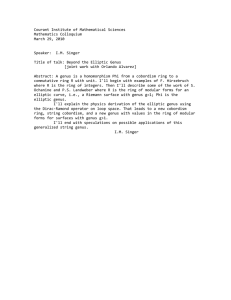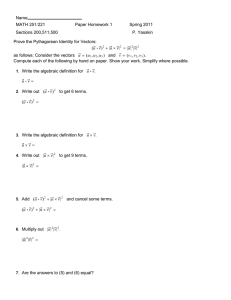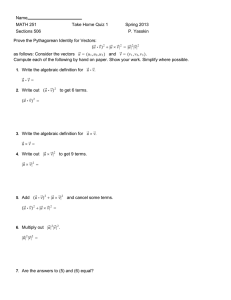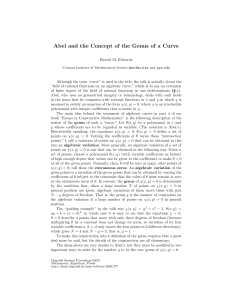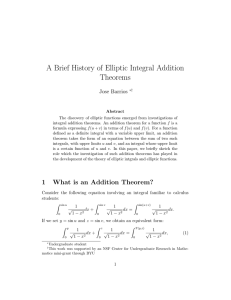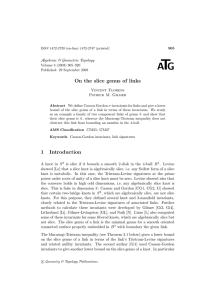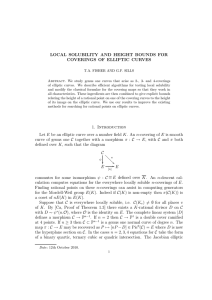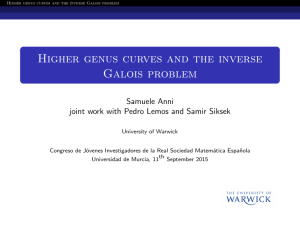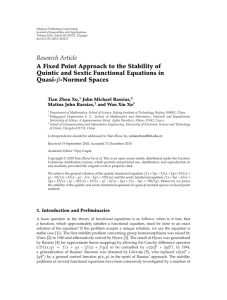RESOLUTION OF DEGREE GENUS TWO THETA CONSTANTS ANGEL ZHIVKOV
advertisement
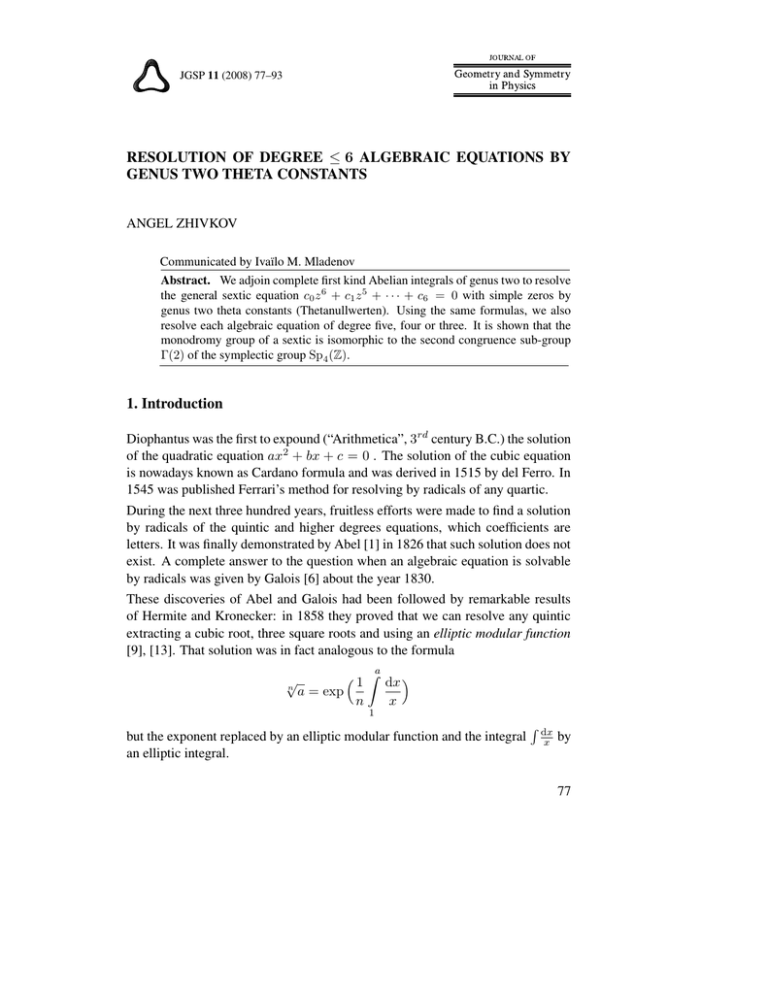
JGSP 11 (2008) 77–93 RESOLUTION OF DEGREE ≤ 6 ALGEBRAIC EQUATIONS BY GENUS TWO THETA CONSTANTS ANGEL ZHIVKOV Communicated by Ivaïlo M. Mladenov Abstract. We adjoin complete first kind Abelian integrals of genus two to resolve the general sextic equation c0 z 6 + c1 z 5 + · · · + c6 = 0 with simple zeros by genus two theta constants (Thetanullwerten). Using the same formulas, we also resolve each algebraic equation of degree five, four or three. It is shown that the monodromy group of a sextic is isomorphic to the second congruence sub-group Γ(2) of the symplectic group Sp4 (Z). 1. Introduction Diophantus was the first to expound (“Arithmetica”, 3rd century B.C.) the solution of the quadratic equation ax2 + bx + c = 0 . The solution of the cubic equation is nowadays known as Cardano formula and was derived in 1515 by del Ferro. In 1545 was published Ferrari’s method for resolving by radicals of any quartic. During the next three hundred years, fruitless efforts were made to find a solution by radicals of the quintic and higher degrees equations, which coefficients are letters. It was finally demonstrated by Abel [1] in 1826 that such solution does not exist. A complete answer to the question when an algebraic equation is solvable by radicals was given by Galois [6] about the year 1830. These discoveries of Abel and Galois had been followed by remarkable results of Hermite and Kronecker: in 1858 they proved that we can resolve any quintic extracting a cubic root, three square roots and using an elliptic modular function [9], [13]. That solution was in fact analogous to the formula √ n 1 Za dx a = exp n x 1 but the exponent replaced by an elliptic modular function and the integral an elliptic integral. R dx x by 77

